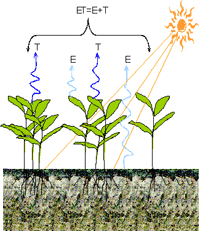Agricultural Research Division of IANR

West Central Research and Extension Center, North Platte
Date of this Version
2013
Citation
Published in J. Anim. Sci. (2013) 91: 5485–5491. DOI:10.2527/jas2013-6301
Abstract
A 2-yr study utilizing 120 mature, crossbred (Angus × Herford) cows/year, evaluated the influence of cow BCS and dried distillers grains with solubles (DDGS) supplementation during late gestation on cow performance and productivity of subsequent offspring. Treatments were arranged as a 2 × 2 factorial in a randomized complete block design with 2 BCS and with or without DDGS supplementation. Cows were nutritionally managed to enter the last trimester of gestation with a BCS of approximately 4 (LBCS) or 6 (HBCS) and were thereafter managed in a single herd (initial BCS were 4.4 and 5.7 for LBCS and HBCS treatments, respectively). During the last trimester, 12.7 kg/cow of low quality meadow hay (6.4% CP; DM basis) was provided each day. Supplemented cows were gathered and sorted into pens (12 pens; 5 cows/pen; 6 pens/BCS) every Monday, Wednesday, and Friday, and received the equivalent of 0.9 kg/cow daily of DDGS (31% CP; DM basis; supplement was consumed within 30 min on each supplementation day). Calf birth weight was greater for HBCS compared to LBCS (P = 0.001) and for supplemented compared to nonsupplemented cows (P = 0.04). Cow weight at weaning was greater for HBCS compared with LBCS (P < 0.001); however, no differences were noted because of supplementation (P = 0.16). Weaning weight was greater for the offspring of supplemented compared to nonsupplemented cows (P = 0.02). There were no differences in postweaning calf performance (growing lot and feedlot) or carcass characteristics (P > 0.05) due to treatments. Nevertheless, HBCS cows had approximately 10% more live calves at birth and at weaning (P ≤ 0.01) compared to LBCS cows. Consequently, the total weaned calf weight per cow was 26 kg greater for HBCS compared with LBCS (P = 0.004). Pregnancy rate was greater (P = 0.05) for HBCS than LBCS cows (92% vs. 79%, respectively) but not affected by supplementation (P = 0.94). This research demonstrates the potential consequences of not maintaining cows in adequate BCS at calving. Also, though it appears that supplementation of beef cows with DDGS during late gestation has a positive effect on weaning weight, there was no apparent developmental programming effect on feedlot performance and carcass characteristics of calves.

